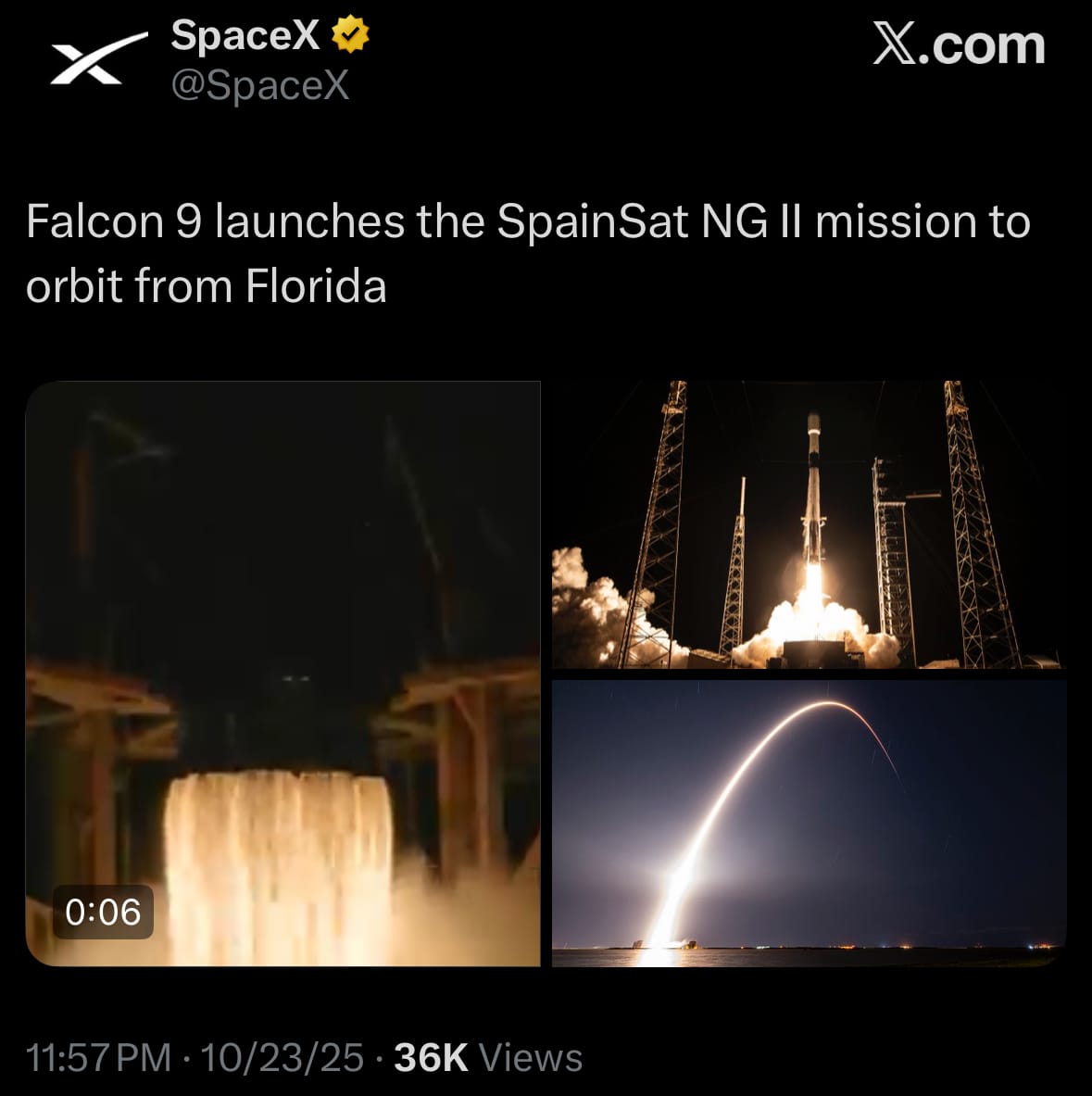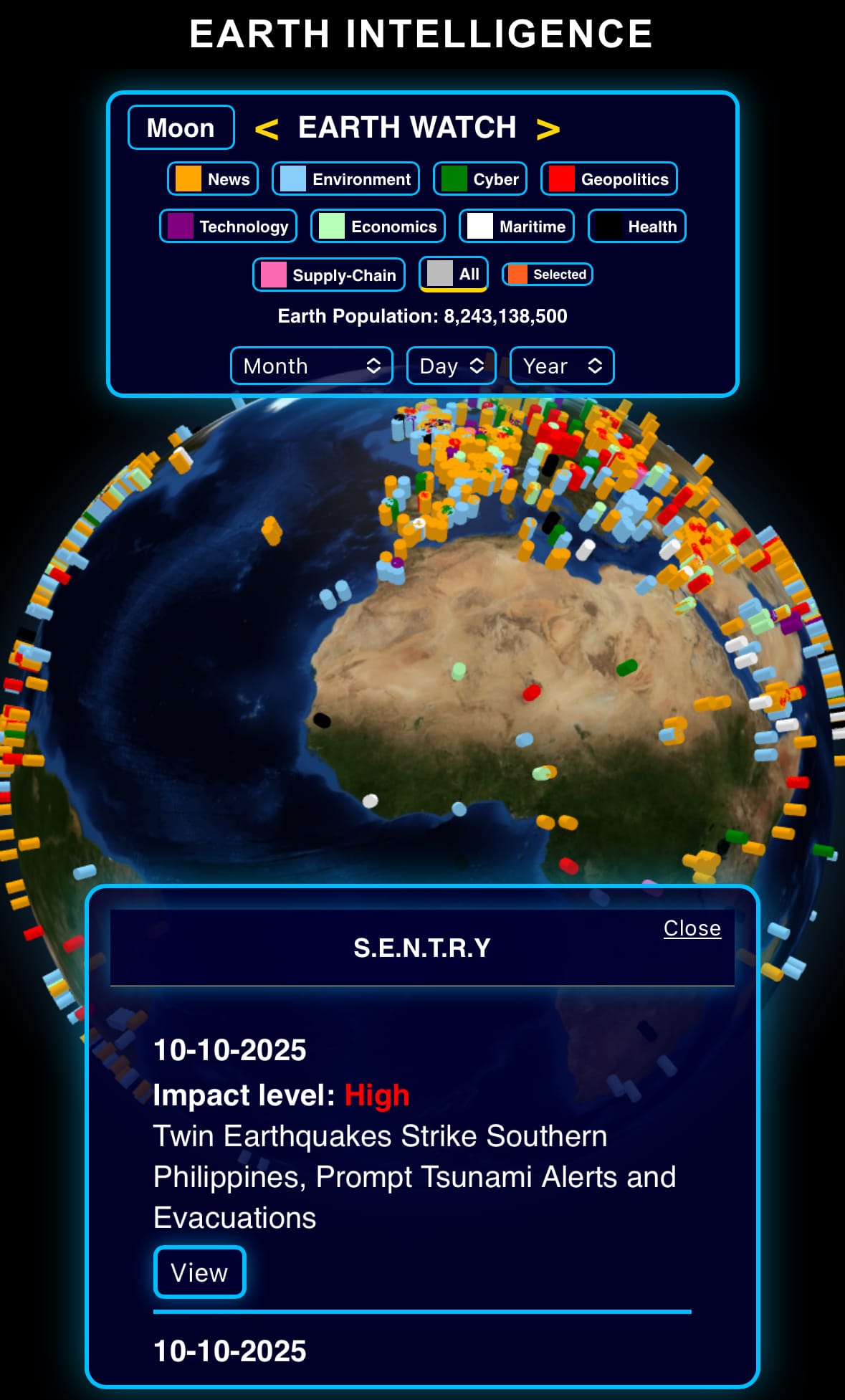Friday☕️

Trending:
- Yesterday, October 23, 2025, Alaska Airlines experienced a significant IT outage that led to a nationwide ground stop for all its flights, including those of its subsidiary Horizon Air, starting shortly before 7 p.m. ET. The outage disrupted operations at airports across the U.S., preventing takeoffs and affecting passengers with delays and cancellations. It lasted for more than two hours, with services gradually resuming after the IT team addressed the issue, though the exact cause was not publicly specified.

- Alaska Airlines, headquartered in Seattle and serving over 120 destinations in North America, operates as a major carrier with a focus on West Coast routes and partnerships like the oneworld alliance. This outage marks the second major technical disruption for the airline since July, highlighting challenges in maintaining reliable systems amid high operational demands.
Economics & Markets:
- Yesterday’s U.S. stock market:

- Today’s commodity market:

- Today’s crypto market:

Geopolitics & Military Activity:
- On October 23, 2025, the Israeli Defense Forces (IDF) conducted multiple airstrikes on Hezbollah targets in Lebanon, including a weapons depot in Nabatieh in southern Lebanon, a training camp and missile manufacturing site in the eastern Bekaa Valley, and other locations in northern and southern regions. The strikes resulted in at least four deaths, according to Lebanon's health ministry, with two killed in the Bekaa area and two in southern villages like Arab Salim.

- Lebanese media reported explosions near schools in Baalbek, injuring students, though the IDF stated the operations targeted Hezbollah infrastructure used for rebuilding capabilities and planning attacks, in violation of Israel-Lebanon understandings. The strikes involved five fighter jets hitting around 16 sites in total. These airstrikes reflect ongoing border tensions nearly a year after a U.S.-brokered ceasefire, with both sides accusing each other of violations amid sporadic exchanges.

Environment & Weather:

Space:
- On October 23, 2025, SpaceX launched the SpainSat NG-II mission from Space Launch Complex 40 at Cape Canaveral Space Force Station in Florida, placing a Spanish military communications satellite into geostationary orbit using a Falcon 9 rocket. The satellite, constructed by Thales Alenia Space for Hisdesat, is intended to deliver secure voice and data communications for the Spanish armed forces and their allies, supporting expanded global coverage for government and military activities.

- This was SpaceX's 134th Falcon 9 launch of the year, contributing to the company's high launch frequency and involvement in global space projects. SpainSat NG-II forms part of a two-satellite system meant to update older technology, including the first satellite deployed earlier in the year, with features like improved encryption and resistance to jamming for current defense requirements.
Science & Technology:
- On October 23, 2025, Google announced updates to Google Earth AI, a platform that integrates long-term geospatial data with AI models to offer information on Earth's environmental and climate shifts. The updates feature a geospatial reasoning agent driven by Gemini, which lets users pose questions in everyday language about satellite images—for example, on deforestation trends or city growth—and get concise answers along with visual maps.

- This makes the tool easier for businesses and researchers to use via Google's Cloud platform, targeting areas like emergency responses to disasters and tracking sustainability, though no specific pricing or rollout dates were given beyond adding it to current services. Google Earth AI uses data from satellites, weather, and maps to speed up reviews of worldwide events, such as forecasting storm routes or evaluating climate effects, to aid choices in sectors like city development and environmental protection.

Statistic:
- Largest assets on Earth by market capitalization:
- Gold: $28.640T
- 🇺🇸 NVIDIA: $4.435T
- 🇺🇸 Microsoft: $3.869T
- 🇺🇸 Apple: $3.852T
- 🇺🇸 Alphabet (Google): $3.048T
- Silver: $2.698T
- 🇺🇸 Amazon: $2.357T
- Bitcoin: $2.216T
- 🇺🇸 Meta Platforms: $1.842T
- 🇸🇦 Saudi Aramco: $1.675T
- 🇺🇸 Broadcom: $1.625T
- 🇹🇼 TSMC: $1.507T
- 🇺🇸 Tesla: $1.493T
- 🇺🇸 Berkshire Hathaway: $1.057T
- 🇺🇸 Walmart: $854.21B
- 🇺🇸 JPMorgan Chase: $801.79B
- 🇺🇸 Oracle: $798.42B
- VOO: $768.34B
- 🇨🇳 Tencent: $741.23B
- 🇺🇸 Eli Lilly: $736.02B
- IVV: $707.84B
- SPY: $681.05B
- 🇺🇸 Visa: $670.32B
- VTI: $552.02B
- 🇺🇸 Mastercard: $516.51B
History:
- Creatine’s story begins in 1832, when French chemist Michel Eugène Chevreul first isolated it from meat and named it after the Greek word kreas, meaning “flesh.” For decades, it remained a biochemical curiosity—a naturally occurring compound stored in muscles as phosphocreatine, helping cells regenerate adenosine triphosphate (ATP), the body’s fundamental energy molecule. In the early 20th century, scientists discovered that the body synthesizes creatine from the amino acids arginine, glycine, and methionine, produced mainly in the liver and kidneys, then stored in skeletal muscle. By the mid-1900s, researchers were studying its role in energy metabolism and muscle contraction, but creatine’s rise as a performance enhancer didn’t begin until the 1990s, when Olympic athletes and bodybuilders began using creatine monohydrate supplements after studies revealed it could boost power output, strength, and recovery.
- Today, creatine is one of the most researched and widely accepted ergogenic aids in the world. Hundreds of clinical studies confirm its safety and effectiveness, not only for athletic performance but also for cognitive enhancement, neurological protection, and even potential therapeutic use in conditions like muscular dystrophy and depression. It works by saturating muscle stores with phosphocreatine, allowing for faster regeneration of ATP during high-intensity, short-duration activities—like sprinting or lifting. Its popularity has endured for decades because it enhances both performance and adaptation, supporting greater muscle growth and endurance over time. Creatine’s journey from a trace compound in meat to a cornerstone of modern sports nutrition marks one of the most successful translations of biochemical research into everyday human enhancement.
Image of the day:

Thanks for reading! We’ll be back on Monday.
- EARTH INTELLIGENCE builds private intelligence systems for organizations — connecting their internal and external data with AI to create one interactive command center for real-time awareness, decision making, and predictions.
Earth is complicated, we make it simple. More tools and products coming soon…
- Click below if you’d like to view our free EARTH WATCH globe:


Click below to view our previous newsletters:

Support/Suggestions Email:
earthintelligence@earthintel.news




